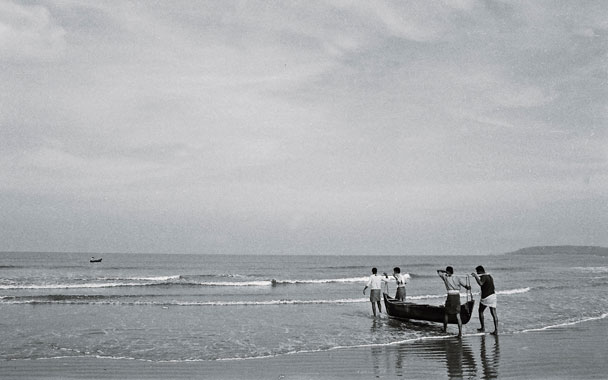Faiza Moosa was showing us how to make chapatis. As she worked, she forgot she was speaking to Westerners, and her rapid Malayalam rippled over us like waves. Faiza’s soft, silky dough was beautiful enough to elicit a low, appreciative whistle from a fellow student. The flour, called atta, was whole-wheat by the look of it and very finely milled—it felt powdery to the touch. The finished chapatis, which took just seconds to cook on the griddle-like tava, would be delicious wrapped around a bit of the beef curry simmering in a pressure cooker (standard in most Indian kitchens) on a back burner. I’d traveled halfway around the world to learn about the rich, complex cuisine of the Mappilas (Muslims) in this isolated part of southwestern India. Faiza and her husband, C. P. Moosa, run Tellicherry Pepper cooking classes at their Ayisha Manzil guesthouse, a shadowy, high-ceilinged, 145-year-old bungalow on a cliff overlooking the Arabian Sea, near the rackety little town of Tellicherry (called Thalassery in Hindi, although that language isn’t spoken in South India). An early-morning expedition to the fish market (not for the squeamish) and vegetable and spice stalls determines the day’s communal meals. (011-91-984-700-2340; $1,225 for four nights, with meals and three cooking classes)
What I Learned
Mappila dishes take South Indian ingredients—local fish from both sea and estuary, curry leaves, cardamom, coconut—and use them in North Indian-style ones.
Biggest Surprise
Tellicherry has long been famed for its peppercorns, but the Mappilas, who originally controlled the pepper trade, do not use them.
Before You Go
Pack mosquito repellent, a flashlight, and an extra camera battery. If you’re left-handed, practice eating with your right in deference to local custom.


